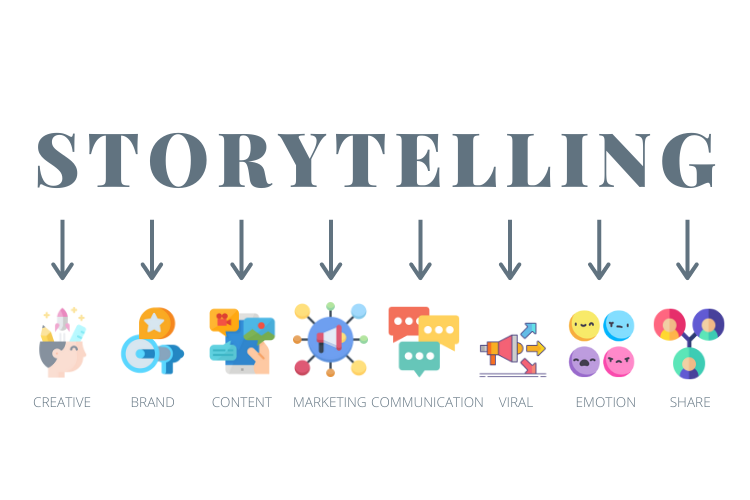
Storytelling has been a fundamental aspect of human communication for centuries, and its significance in marketing continues to grow. The rise of platforms like TikTok and Instagram has further amplified the importance of visual storytelling, particularly among younger demographics such as Generation Z. As noted by Zhang et al., storytelling serves as a critical means of image promotion for enterprises, nations, and individuals alike (Zhang et al., 2022). It transforms abstract concepts into relatable narratives that resonate with audiences. For instance, every successful enterprise is often underpinned by a compelling brand story, which helps shape consumer perceptions and drive loyalty (Zhang et al., 2022).
Moreover, storytelling is rooted in narrative studies, drawing from disciplines such as literature, sociology, and communication (Zhang et al., 2022). The application of archetype theory to brand storytelling has been particularly impactful. Archetypes such as the hero or explorer allow consumers to relate to brands by seeing themselves in the narrative (Wertime, 2022).
Visual storytelling is a defining trend in content marketing, driven by the pandemic, the rise of e-commerce, video’s growing impact, and the use of virtual reality (PostMedia Solutions, 2022). It is an evolution of classic storytelling, helping brands stand out by connecting with audiences emotionally. Video has transformed marketing, with platforms like YouTube capturing the attention of young audiences (PostMedia Solutions, 2022). YouTube’s reach is massive and diverse, making it the most popular social media platform in the U.S. (PostMedia Solutions, 2022). 86% of businesses use video, and 92% of marketers consider it important, with 88% reporting a positive ROI (PostMedia Solutions, 2022). Recent challenges have pushed businesses to combine visual content and storytelling to educate and engage customers. Visual storytelling is now a key brand-building and engagement strategy because it’s driven by the target audience (PostMedia Solutions, 2022).
Visual storytelling is more than just using videos or images; it is a strategic approach that leverages visuals to communicate a brand’s narrative from the perspective of its target audience. According to Zhang et al., storytelling is a crucial means of image promotion, helping enterprises build corporate identities and make inroads into new markets (Zhang et al., 2022). When done effectively, visual storytelling connects with audiences on an emotional level, offering relevant information while showcasing a brand’s unique voice and persona. Visual storytelling employs various media, including videos, GIFs, images, illustrations, graphics, and motion graphics (PostMedia Solutions, 2022).

The theoretical foundations of storytelling in marketing often draw from narrative studies, including archetype theory and plot theory. Archetypes such as the hero or explorer allow consumers to see themselves in brand stories, fostering deeper emotional connections (Zhang et al., 2022). For instance, Nike frequently uses the hero archetype in its campaigns, inspiring audiences through stories of perseverance and triumph. Visual storytelling offers several advantages for brands, such as :
- Improved Brand Perception
High-quality visuals combined with compelling narratives enhance brand perception. Zhang et al. emphasize that storytelling helps shape brand images by allowing consumers to experience the essence of a brand through coherent narratives (Zhang et al., 2022). For example, hotel brands use well-designed service environments as stages to deliver their brand stories, enriching consumer imagination and fostering loyalty.
- Deeper Engagement
Visual storytelling positions the audience as protagonists, showcasing their challenges and offering solutions through the brand’s products or services. This approach aligns with Zhang et al.’s findings that consumer storytelling often reflects personal perceptions and attitudes while fostering social interactions (Zhang et al., 2022).
- Emotional Connection
Emotional resonance is key to effective storytelling. By using relatable characters and scenarios, brands can evoke feelings such as joy, hope, or inspiration. Zhang et al. highlight that consumer experience now extends beyond product usage to include relationship experiences and post-consumption sharing (Zhang et al., 2022).
- Increased Sharing
Visual content is inherently shareable due to its emotional impact and self-explanatory nature. As Zhang et al. note, consumer-driven storytelling in the sharing economy allows individuals to become co-creators of brand narratives, amplifying reach and engagement (Zhang et al., 2022).
A significant shift in storytelling research has been the move from independent story creation by enterprises to co-creation models involving both enterprises and consumers. Pera et al. introduced frameworks for enterprise-consumer story co-creation, emphasizing shared narratives that foster deeper engagement (Pera et al., 2017). This approach allows brands to integrate consumer experiences into their storytelling strategies.
Generation Z demands authenticity and relatability from brands. They prefer content that feels genuine rather than overly polished. Vibrant visuals, bold typography, dynamic editing styles, and user-generated content (UGC) are particularly appealing to this demographic. Platforms like TikTok and Instagram have become ideal spaces for visual storytelling due to their focus on short-form videos and interactive features. Below are examples of capturing Generation Z’s attention through storytelling :
- Leveraging Trends on TikTok
Brands that embrace trending challenges on TikTok successfully appeal to Gen Z’s love for creativity and participation. For example, Chipotle’s #GuacDance challenge encouraged users to create fun dance videos celebrating their love for guacamole. This campaign generated significant engagement, demonstrating how leveraging platform-specific trends can foster connection and interaction (Zhang et al., 2022).
- Highlighting Diversity Through Inclusive Narratives
Fenty Beauty disrupted the beauty industry by embracing diversity and inclusivity. The brand’s campaigns featured models of various ethnicities, skin tones, and body types, aligning with Gen Z’s values of representation and equity. This genuine commitment to inclusivity resonated strongly with younger audiences, making Fenty Beauty a standout success (Zhang et al., 2022).
- Focusing on Relatability with Real-Life Scenarios
Airbnb’s marketing strategy highlights real customer experiences to create relatable narratives. For instance, their campaign featuring a family reconnecting during a stay in a cozy cabin appeals to Gen Z’s desire for authentic and meaningful experiences. By showcasing genuine stories rather than staged content, Airbnb fosters trust and emotional connection (Zhang et al., 2022).
- Vibrant Visuals and Bold Typography in Social Media Campaigns
Brands that use vibrant visuals, bold typography, and dynamic editing styles in their marketing effectively capture Gen Z’s attention. For instance, companies that incorporate these elements into their storytelling can create engaging content that resonates with this demographic’s preference for authenticity over overly polished presentations (Zhang et al., 2022).
- User-Generated Content (UGC) for Community Building
Encouraging user-generated content allows brands to build community among their consumers. For example, brands that invite customers to share personal stories or experiences related to their products can foster a sense of belonging and connection that is particularly appealing to Gen Z (Zhang et al., 2022).
- Dynamic Editing Styles in Short-Form Videos
Short-form videos with dynamic editing styles have become increasingly popular among Gen Z audiences. Brands that utilize these techniques in their storytelling can effectively engage younger consumers by presenting content in a visually appealing and relatable manner (Zhang et al., 2022).
Storytelling and visualization have become indispensable tools in content marketing, allowing brands to connect with their audiences on an emotional and personal level. As Zhang et al. emphasize, storytelling is a critical means of image promotion, enabling enterprises to build compelling brand identities and form deeper relationships with their consumers (Zhang et al., 2022). Through incorporating narrative techniques such as archetypes and co-creation models, brands can create relatable stories across diverse audiences.
The rise of visual storytelling has further amplified the impact of marketing strategies. As highlighted by PostMedia Solutions, the use of videos, GIFs, images, and other visual media has transformed how brands communicate their narratives. These visual elements not only enhance engagement but also improve brand perception, foster emotional connections, and increase shareability (PostMedia Solutions, 2022). Platforms like TikTok and Instagram have proven especially effective for reaching younger demographics such as Generation Z, who value authenticity and relatability in brand interactions. Apart from that, the shift toward enterprise-consumer co-creation marks a new era in storytelling. By involving consumers in the narrative process—whether through user-generated content or shared experiences—brands can build stronger connections rooted in shared values and community (Zhang et al., 2022). This approach aligns with the growing importance of relationship experiences over mere product consumption.
AYO Academy’s course on Content Marketing is designed to equip you with the skills and insights needed to harness the power of storytelling and visualization. By enrolling, you’ll learn how to integrate effective storytelling with engaging visuals, ensuring your brand captures attention, inspires trust, and drives action.
As both Zhang et al. (2022) and PostMedia Solutions (2022) demonstrate, the future of content marketing lies in the seamless integration of storytelling and visualization—an approach that ensures brands remain relevant, relatable, and impactful. Join us to explore the future of content marketing. Don’t miss this opportunity to make your brand more relevant, relatable, and impactful!
References
Zhang W., Qu B., Gao K., “Research Progress and Trend of Storytelling in Marketing Based on Literature Search Visualization Tools: From Independent Creation to Co-creation by Enterprises and Consumers,” December 2022.
Wertime S., “Archetype Theory in Brand Storytelling,” Journal of Marketing Research Studies (2022).
Pera R. (2017) Empowering the new traveller: storytelling as a co-creative behaviour in tourism. Current Issues in Tourism20: 331-338. doi: https://doi.org/10.1080/13683500.2014. 982520
PostMedia Solutions. “The Power of Visual Storytelling in Content Marketing,” April 4, 2022.